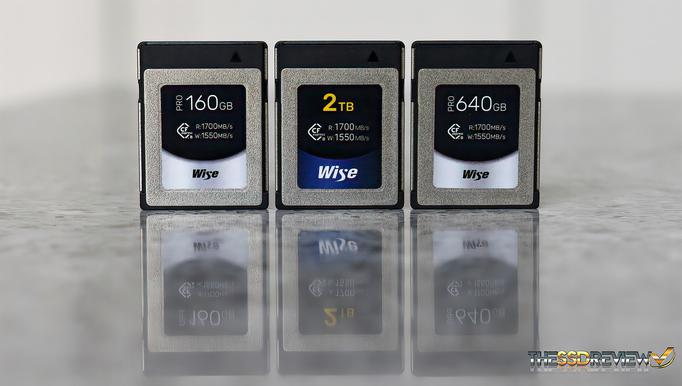The popularity of CFExpress Type B cards has been overwhelming over the past year and we are certain that it will continue to grow as newer digital equipment is released with this type of storage in mind.It moves us from under 100MB/s data transfer speed for most up to over 5x that with CFExpress highs of 1700MB/s.Don’t get me wrong.Media equipment still needs to catch up and you won’t be seeing 1700MB/s data movement in any camera anytime soon but, we have moved out of that dreaded era of filled buffers at the exact wrong time with storage speeds in excess of 400MB/s in newer cameras…such as the canon EOS R5.
The R5 couldn’t be a better example of a camera for an explanation of the type of storage tested in this report for two reasons;it is capable of very high end storage intensive recording up to 8K RAW and can also take photo’s at up to 20 shots per second for those more reliant on still photography.Two tasks… two different storage requirements and we are testing both here.That is because Canon is the first and only (we believe) to rely on PCIe 3.0 x2 (two lane) within the R5 itself, although the Canon C500MkII has this as well.
Checking out this picture above, you will notice two distinctly different cards for our review.First off, we have the Wise CFExpress Type B 2TB Memory Card at center which has the largest capacity available on the market today.Next, we have the 160GB and 640GB versions of the Wise CFExpress Type B ‘PRO’ Memory Cards, these being Wise’s newest release.All are capable of data transfer performance up to 1700MB/s read and 1550MB/s write.
The difference between the regular and the ‘Pro’ versions comes down to sustained write performance, which we will be testing today.Today’s cameras, capable of recording higher resolutions like 4K RAW and 8K, need a higher sustained write data throughput than we have traditionally seen. If those higher card sustained writes are not there for the R5 as an example, the user will not see, or may see greyed out video recording features.You just bought yourself a camera and might not realize that it is not capable of its full potential.
Again looking at the packaging of the ‘Pro’ versions pictured above, claimed sustained write performance is 1300MB/s. That means that when we throw an 85GB folder of say 8K video files on the Wise CFExpress Type B Pro 160/640GB cards, the lowest continual data transfer speed should be 1300MB/s.Older similar cards, as well as those of a larger capacity might be lucky to reach 300-400MB/s.8K RAW requires 400MB/s very least.

Checking Amazon, we are not seeing much with respect to Wise at this time but this could be simply because of availability, and the fact that the Pro versions are a new release.All cards come with a limited two year warranty and MSRP is listed as $263 (160GB Pro), $448 (320GB Pro), $749 (640GB Pro) and $999 for the 2TB capacity we are testing today.All capacities have the same listed specs of 1700MB/s read and 1550MB/s write, are PCIe 3.0 x2 (two-lane), and are backward compatible with XQD storage.The key here is to remember that sustained writes between cards changes significantly.
TSSDR TEST BENCH AND PROTOCOL
CFExpress Card testing at TSSDR differs slightly, depending on whether we are looking at consumer or enterprise storage media. For our Wise CFExpress Type B Card testing today, our goal is to test in a system that has been optimized with our SSD Optimization Guide.
For this Test Bench, the CPU C-States, Enhanced Intel SpeedStep Technology (EIST) and Intel Speedshift (P-States) have not been disabled. As you will see below, the system is also bumped to 5.3GHz with memory at full speed in its XMP 2 profile.
The components of this Test Bench are detailed below. All hardware is linked for purchase and product sales may be reached by a simple click on the individual item. As well, the title is linked back to the individual build article where performance testing can be validated. Clicking on the Title below will bring you to our complete report on this new Gen 4 PC system.
INTEL Z590 PCIE 4.0 COMPONENTS (Click for System Report)
| PC CHASSIS: | Corsair 5000X RGB White Tempered Glass Chassis |
| MOTHERBOARD: | ASUS ROG Maximus XIII Z590 Hero Gen 4 |
| CPU: | Intel 11th Gen Core i9-11900K |
| CPU COOLER: | Corsair Hydro Series H150i Capellix White |
| POWER SUPPLY: | Corsair RM850x 80Plus White |
| GRAPHICS: | ZOTAC GeForce RTX 3080 Trinity White |
| MEMORY: | Corsair Dominator Platinum RGB DDR4-3200 32GB |
| STORAGE: | Sabrent Rocket 4 Plus Gen 4 4TB NVMe SSD |
| KEYBOARD: | Corsair K70 RGB Mk. 2 SE White Gaming |
| MOUSE: | Corsair M65 RGB Elite FPS Gaming |
| MONITOR: | Samsung 34″ 1440p WQHD Ultrawide Gaming |
BENCHMARK SOFTWARE
The software in use for today’s analysis is typical of many of our reviews and consists of Crystal Disk Info, ATTO Disk Benchmark, Crystal Disk Mark, Anvil’s Storage Utilities, AJA, TxBench, as well as Sustained Disk Transfer, Temperature and True Data Transfer Rate Testing. Our selection of software allows each to build on the last and to provide validation to results already obtained.
For our testing today, we will be relying on the PCIe 3.0 x4 CFExpress reader created for us by Lexar some time ago.As a bit of confirmation, we always test with multiple readers we have on hand and of both the ThunderBolt 3 and the newer USB 3.2 2×2 spec.There shouldn’t be a difference in any of these devices as the top speed of CFExpress is well below the threshold of all readers ( and our AIC Gen 3 reader), whether they be Thunderbolt 3/4 with a threshold of 2.8GB/s or USB 3.2 2×2 with a top speed of 2GB/s.
Pages: 1 2 3 4 5 6



